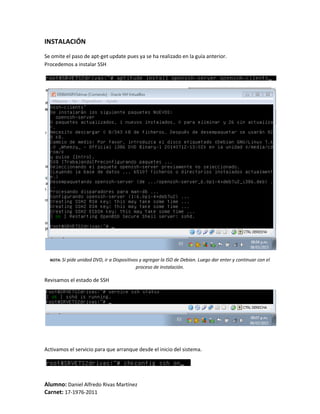

make the directory hidden while ssh is the name of the directory. The / means the directory will be under (or inside) the Home directory and the. The ~ will make this directory in the users ‘Home’.

You’ll get a security warning pops up if you’re connecting to the server for the first time, it’s safe to click Yes. Now we can connect to our server by clicking on Open in PuTTY In future you’ll be able to select your profile from the Saved Sessions then click Load & Open. Enter a name for the profile under the Saved Sessions option (see image below) we used 192.168.0.100 but you can use anything memorable e.g.Click on Session on the left hand tree menu.Go to Connection > Data and enter the username with that you want to log in to your SSH server under Auto-login username.Enter your servers IP address under Host Name (or IP address).Our servers IP is going to be 192.168.0.100. You can create a profile in PuTTY for your various SSH servers.
#Debian putty ssh Pc#
We’ll require PuTTY, PuTTYgen, and Pageant on our local Windows PC.ĭownload Putty, PuttyGen and Pageant from the PuTTY download page and save them on your local Windows PC

Your server is probably being attacked by some kind of bot as you read this now!įollow this guide disable disable the username/password logins so only users with a valid private/public key pair can log in. Just take a peek at your log files to see just how often this happens. Your server/website is under constant attack from bots and evil hackers running brute-force attacks on your system.
#Debian putty ssh software#
Brute Forcing software can be used to automate attacks against servers. Key-based SSH logins are far more secure than the standard Root/Password method.
#Debian putty ssh mac#
Linux and Mac have a terminal that includes a SSH client.

PuTTY is an SSH client for logging in to remote servers from your local Windows PC. | convct | 0 comment Key-Based SSH Logins With PuTTYĬreate private/public key pair to log in to a remote system with SSH using PuTTY.


 0 kommentar(er)
0 kommentar(er)
